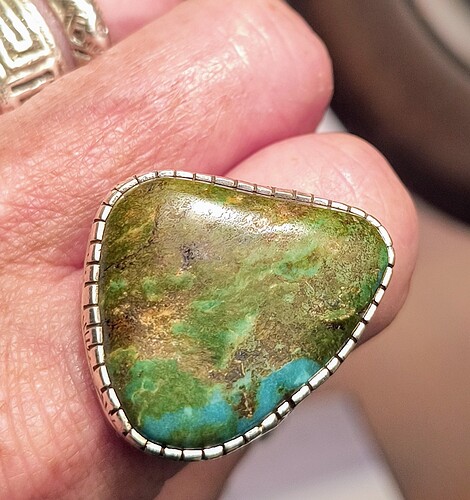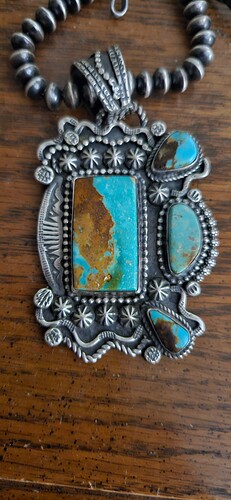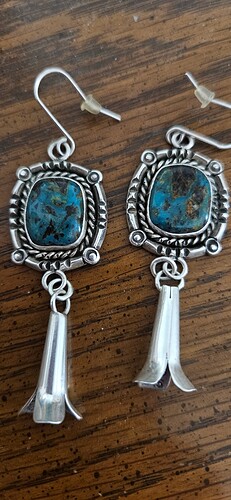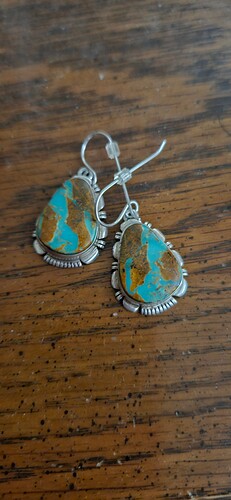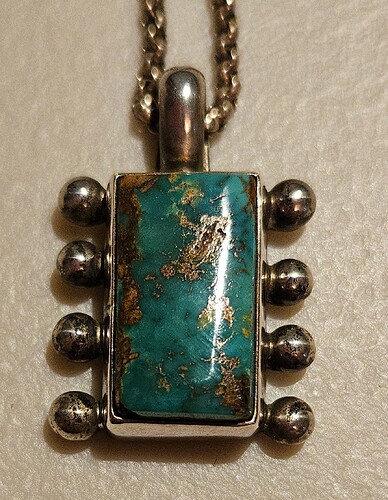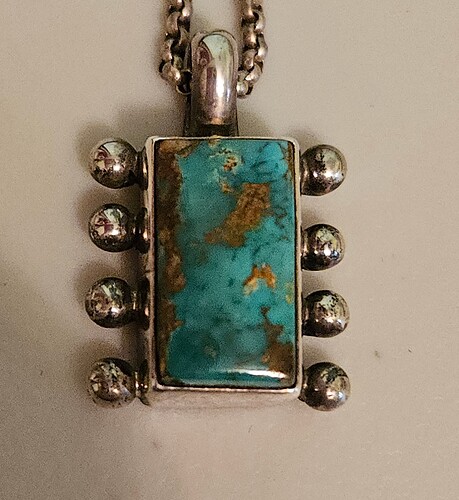I agree with both of your assessment. Polychrome is so commonly used with pottery, I was wondering if it was more common than I knew. We’ll likely all see a lot of turquoise referred to as polychrome from here on out😄
And with all the discussion of Pilot Mountain versus Royston, I have this ring with a stone that I think might be Pilot Mountain. But maybe Royston, or something else, who knows ![]() This just reinforces the fact that, on my part anyway, it’s always educated guessing.
This just reinforces the fact that, on my part anyway, it’s always educated guessing.
The owner of the store in Sedona where I bought it, said she knew it was natural Nevada turquoise, and thought it was Pilot Mountain, but didn’t know for sure.
I’m always drawn to the interesting stones ![]() Here’s my 2 cents, (I’m sure I’ve shared elsewhere…)
Here’s my 2 cents, (I’m sure I’ve shared elsewhere…)
Pendant is Royston per the artist. Squash earrings? They have a rough, almost leathery texture, love ![]() other earrings are ?
other earrings are ?
They are all beautiful! I see that blue to green fade that I love in your Royston pendant. I don’t have a guess on the others; or more correctly, I could guess about 3 different mines on each pair ![]()
A few years ago I purchased some rough Nevada turquoise.
The reputable seller said it came from 3 different claims. They were small, private, unamed mines. New discoveries.
He was helping friends do the mining.
Some of it looks a lot like your ring.
Now that’s definitely polychrome ![]() . I’m likely old school, but I’ve not seen Pilot mountain with that limey-yellowish hue…just beautiful! However, it if I know anything I know that more and more we’re seeing interesting less common turquoise out of these known mines. I do have a Royston ring with much less lime-yellow, but some of these same hues.
. I’m likely old school, but I’ve not seen Pilot mountain with that limey-yellowish hue…just beautiful! However, it if I know anything I know that more and more we’re seeing interesting less common turquoise out of these known mines. I do have a Royston ring with much less lime-yellow, but some of these same hues.
Great ring!
